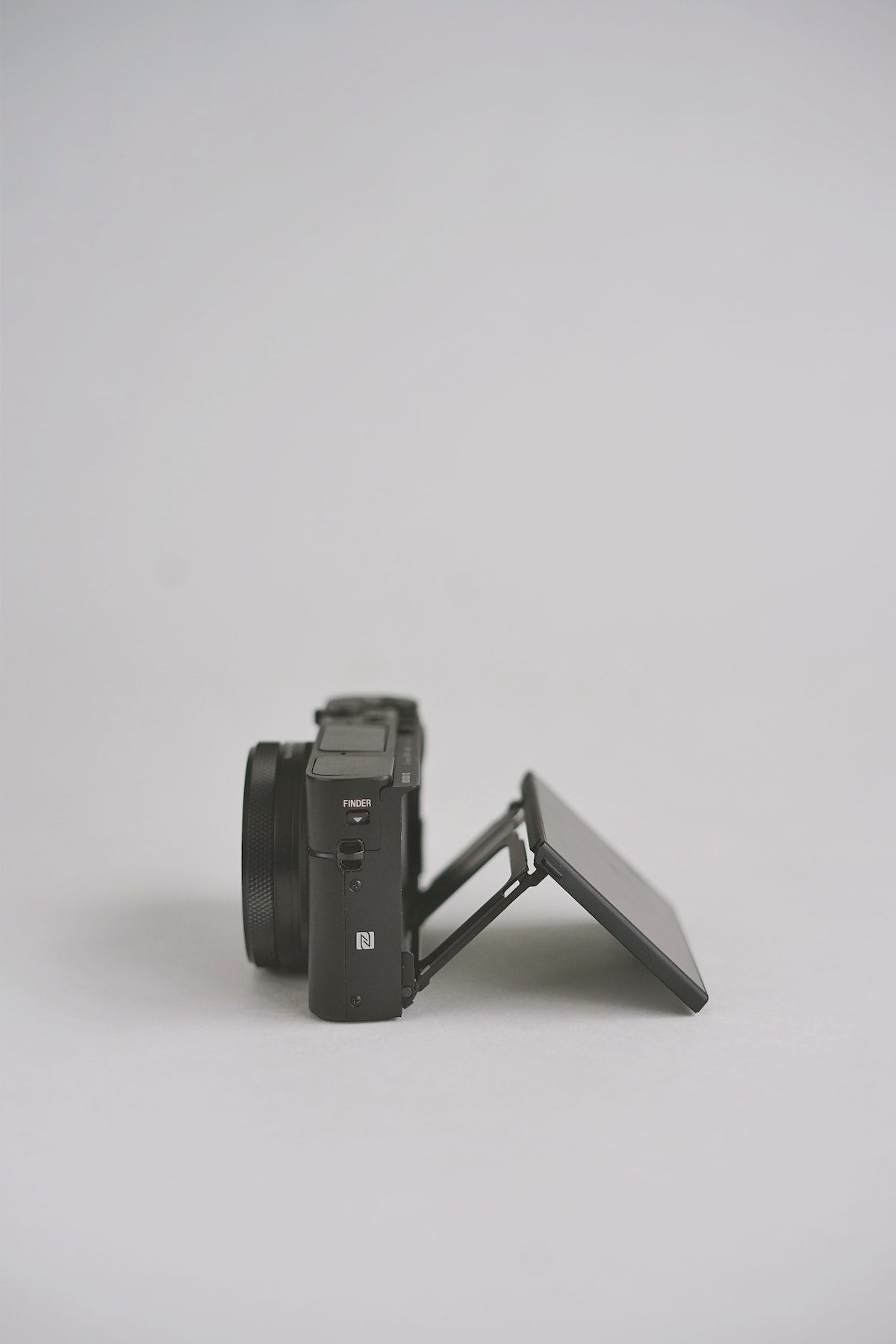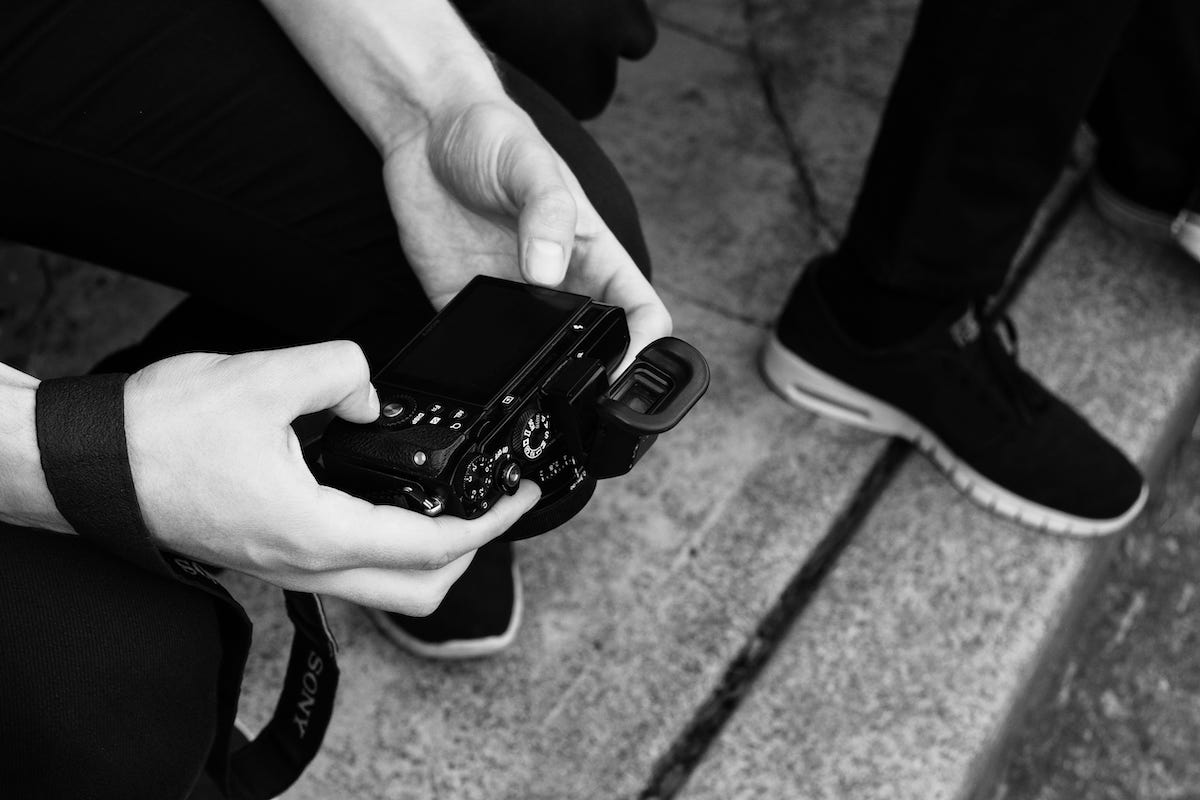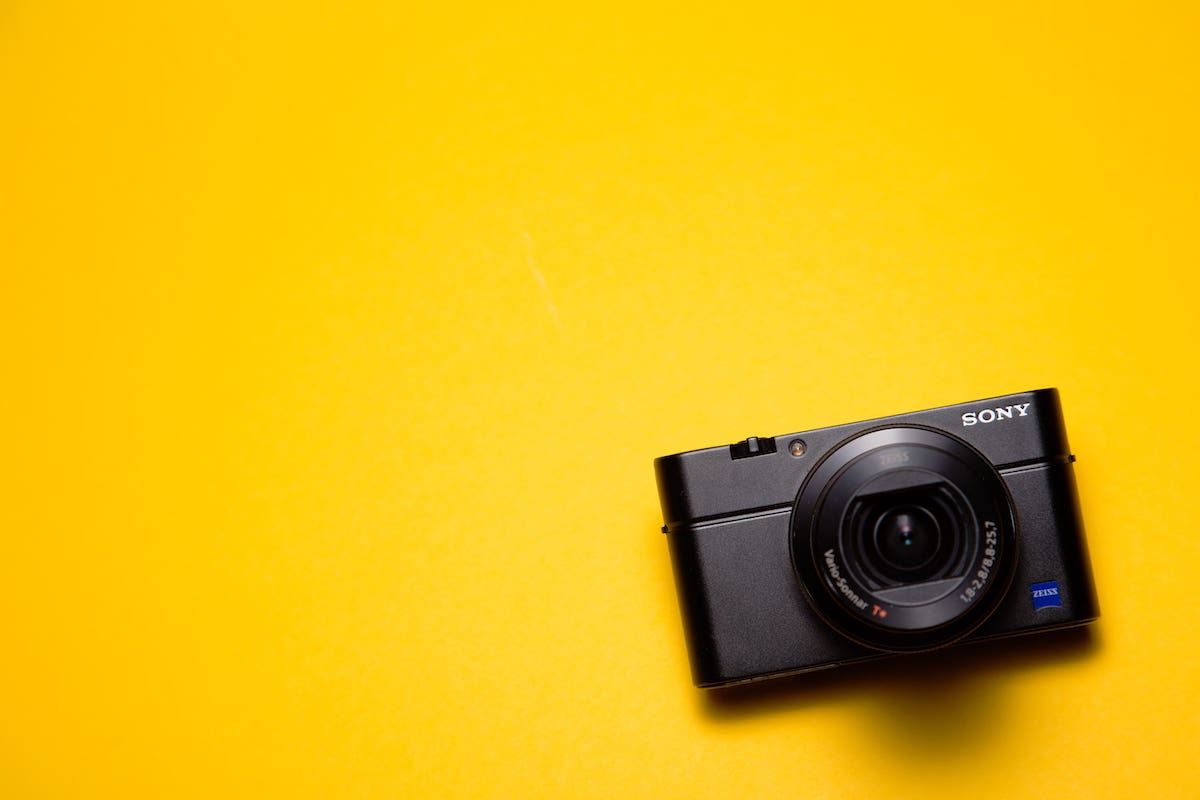Sony RX100 VII Review – a Small & Mighty Camera from Sony
Hire film gear from local filmmakers.

Hire film gear from local filmmakers.
You say only pro-level mirrorless cameras come with features like 4K video capture and eye tracking; we say - you haven't considered the Sony RX100 VII!
It's a small point-and-shoot camera with impressive capabilities you wouldn't expect from any compact camera!
Read on our full review to discover what else this pocket powerhouse has in it and why you should get it in 2025.
Keen to learn more about cameras and other gear? Consult our complete guide to camera equipment to freshen up your knowledge.
Sony RX100 VII key specs
- Sensor: 20.1MP 1-inch Exmor RS CMOS sensor
- Lens: 24-200mm f/2.8-4.5 (35mm Equiv.)
- Screen: 3.0-inch tilting touchscreen, 921,600 dots
- Viewfinder: EVF with a 2.36 million-dot resolution
- Burst shooting: 20fps (up to 90fps in Single Burst Shooting mode)
- Autofocus: Hybrid AF: 357 phase-detect AF points and 425 contrast-detect AF points
- Video: 4K to 30p; Full HD to 120p
- Connectivity: Wi-Fi and Bluetooth
- Battery life: 260 (LCD), 240 (EVF)
- ISO range: 100 - 12’800 native, 64 - 25’600 extended
- Built-in pop-up flash
- Weight: 302g
Sony RX100 VII: pros and cons
Pros:
- Solid build and pocketable form
- High level of user control
- 20fps capture with subject tracking
- Low noise at moderate ISOs
- The tilting screen offers flexible composition
- 4K video with an external microphone port
Cons:
- Lacks a built-in ND filter
- No in-camera raw processing
- Corner softness at 24mm and 200mm
- Average battery life

Build and handling
Compared to its predecessor, the RX100 VII gains many new features.
However, the design stays unchanged. Being super compact and lightweight, this Sony model is packed with many components - a large sensor, an EVF, a built-in flash, an external microphone jack, and an articulating LCD.
Feature packed small body
It is astonishing how the brand managed to squeeze so much into such a small body.
The EVF is particularly suitable for those who want to be more direct with their shot composition, and the tilting LCD screen offers an excellent selfie screen and monitors that vloggers will love.
The 24-100mm equivalent lens provides an F2.8-4.5 maximum aperture range. Despite its minuscule body, the RX100 VII has room to fold up the lens, a battery, an SD card slot, a cavity for the viewfinder to retract, and a full-size 3.5mm microphone socket next to its micro HDMI port and Micro USB socket.
Lagging secure grip
The camera's pocketability is impressive, though it has a little drawback that we can't help but mention.
The metal-shelled body feels robust but still has some handling flaws - super smooth; the camera easily slips through the fingers, so you might want to consider getting a wrist strap to ensure a secure grip.
Ergonomics and controls
The controls layout of the RX100 VII is also similar to other series models. The body features rear buttons to start and stop the videos, access the Fn menu on the screen, the extensive menu system, and the buttons to play and delete images.
A flat command dial joins those buttons featuring directional presses that adjust the flash output, EV compensation, and drive mode.
On the top plate, when releasing the catch at the side, springs up the electronic viewfinder - you don't need to pull the viewfinder back before you can start using it, like with the previous model of the RX100.
The control ring is placed around the lens and has a ribbed finish, making it nice to operate.

AF and video performance
The AI-based real-time autofocus was one of the significant updates that the RX100 VII and other cameras released the same year featured.
The camera seamlessly switches between the focus on the subject's face and eyes and can hold focus if the face turns away from the camera. The AF works well both for humans and animals, but you'll have to select your preference between the two in the menu.
Outstanding tracking mode and great AF
The tracking mode does an incredible job of sticking to the subject, regardless of its movements or image recomposition.
So you don't have to move the focus area around the frame, but instead, acquire it and recompose - the AF will stay glued to the subject and keep it in focus.
The video performance of the RX100 VII is as impressive as in other models of the series. The level of detail truly shines, and the rolling shutter is reduced to a minimum as you move the camera around the scene.
Not the best in-built microphone
Unfortunately, the camera quickly picks up wind noise through the built-in microphones, but this issue is the same with almost all compact cameras.
But Sony gives its RX100 VII an advantage: you can connect an external mic and substantially boost your audio capture quality.
You can also enjoy additional stabilization applied to the footage, which is especially useful if you're shooting some vlogs on the go.
Face and eye detection work great during video recording; the focus doesn't drift away when filming interviews or selfie videos.
Image quality

The RX100 VII produces strong-quality images across various conditions and with minimal intervention required from the user's side.
The level of detail is excellent, and the camera maintains it when the ISO settings are pushed towards the middle of the sensitivity range.
The details are sharp at the entrance of the frame and are well maintained to the edges - only some slight softness appears in the corners of the lens.
Works in multiple lighting conditions
The camera's 1-inch sensor makes it capable of shooting in sub-optimal lighting conditions. Bigger sensors usually produce bigger pixels and less noise, with better performance in blacks and shadows.
In addition, the RX100 VII has a backside illuminated stacked sensor and built-in optical image stabilization. This allows you to take sharper images at lower shutter speeds, letting in more light for clearer photographs.
Who should get the Sony Cyber-shot RX100 VII?
The Sony RX100 VII is a high-end compact camera for travel, action photography, videomaking, and vlogging.
If you're looking for a pocket camera that can do it all and performs great with video and action, then the RX100 VII is a hard-to-beat choice.
Admittedly, the price is a bit above affordable, but the RX100 VII packs the features that almost no other camera of the same level has on the market.
Final verdict: Is the Sony Cyber-shot RX100 VII worth it?
The Sony Cyber-shot RX100 VII is undoubtedly one of the market's most accomplished and feature-packed pocket cameras.
Equipped with a 24-200mm equivalent zoom lens, electronic viewfinder, tilting LCD screen, 20 fps shooting, and 4K video recording, this small but mighty camera is worth an investment.
Add the AI-based autofocus and eye tracking, and you're ready to shoot in as many photography styles as you want.
Is the Sony RX100 VII good for beginners?
The RX100 VII is one of the greatest point-and-shoot cameras on the market, and its ease of use and effectiveness make it beginner-friendly.
Is the Sony RX100 VII worth buying in 2025?
The Sony Cyber-shot RX100 VII is undoubtedly one of the most accomplished and feature-packed pocket cameras on the market, equipped with a 24-200mm equivalent zoom lens, electronic viewfinder, tilting LCD screen, 20 fps shooting, and 4K video recording.
When was the Sony RX100 VII released?
Sony RX100 VII was released in August 2019.






















